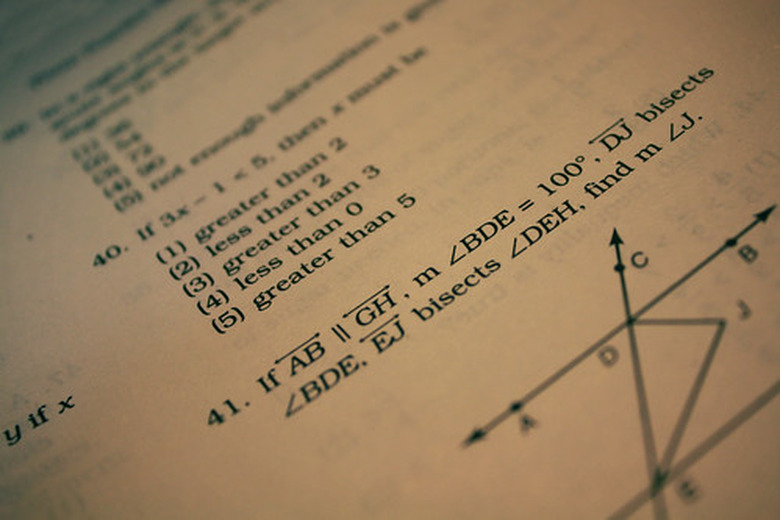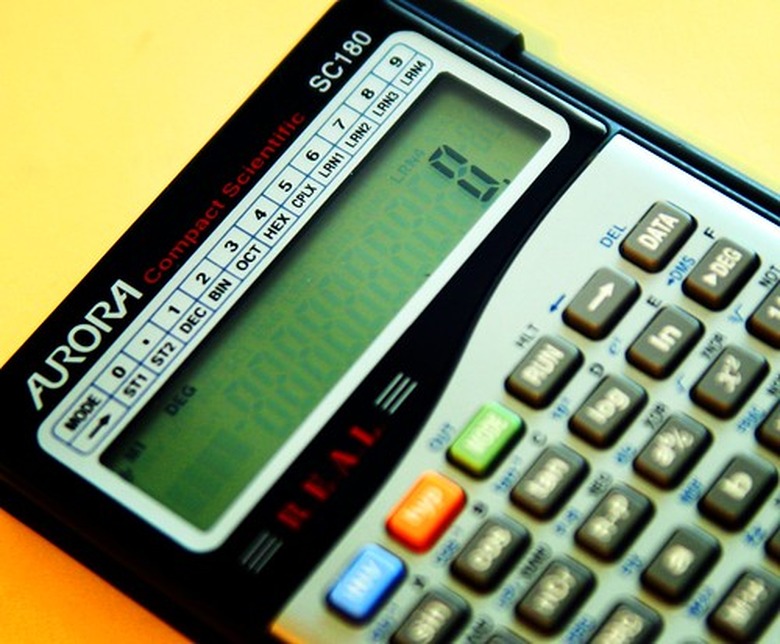About The Basic Math Skills Test
The Standard Achievement Test (SAT) is typically taken by high school juniors and seniors, and is one of the tests used to help determine college entrance. There are three subjects tested in the SAT: math, critical reading, and writing. While there are 10 total sections, only nine are graded; the non-graded section serves as a means for test questions to be evaluated for possible future use.
Basic Math Skills Test
Basic Math Skills Test
The Basic Math Skills test is composed of three math sections. There are 54 total questions, and students are given 70 minutes to answer them. Subjects tested include algebra, geometry, data interpretation and applied math. Unlike math tests in school, there is no partial credit given for incorrect answers.
Types of Questions
Types of Questions
There are two types of questions to the math section of the SAT: multiple choice and "grid-ins". The multiple choice questions have five answer choices from which to choose. The "grid-ins" require the student to come up with the answer and enter it into the grid. Students can choose between numbers 0-9, and other mathematical symbols such as the decimal point.
Test Preparation
Test Preparation
Free online study guides are available at websites such as ProProfs.com or CollegeBoard.com which list types of questions that students should be able to answer. These study guides use terms, illustrations, and diagrams to explain pertinent topics. Reviewing the content of these websites should increase student comprehension.
Practice Test
Practice Test
Practice tests are available online or in books, and usually include actual questions from past tests. It is recommended that students take a practice test before taking the actual SAT. Besides giving the student an idea of what kinds of questions to expect, doing a practice test can also calm the student's nerves and curb test anxiety.
Calculator Rules
Calculator Rules
While all SAT math questions can be completed without the use of a calculator, you may wish to bring one to check your work. The SAT board suggests a scientific or graphing calculator. Sharing calculators between students is prohibited. Calculators are only allowed during the math portions of the test.
References
Cite This Article
MLA
Lauren, Daniella. "About The Basic Math Skills Test" sciencing.com, https://www.sciencing.com/about-the-basic-math-skills-test-12742431/. 7 November 2009.
APA
Lauren, Daniella. (2009, November 7). About The Basic Math Skills Test. sciencing.com. Retrieved from https://www.sciencing.com/about-the-basic-math-skills-test-12742431/
Chicago
Lauren, Daniella. About The Basic Math Skills Test last modified August 30, 2022. https://www.sciencing.com/about-the-basic-math-skills-test-12742431/

